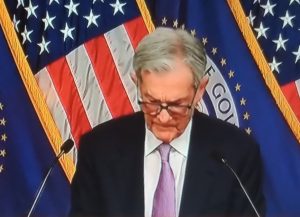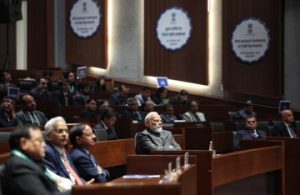Crude oil, on fire, serves double jolt with galloping dollar

Photo credit Russian Monitor
By Our Special Correspondent
New Delhi, September 28: Brent crude oil has gone past $97 per barrel, and it’s within a striking distance of the $100 per barrel mark. With the dollar index also firm above 106, the economists and strategists have reignited the dedollarisation debate.
Even a strong dollar has not dented demand for crude oil, which has been rising steeply ever since Russia and Saudi Arabia announced production cuts to “stabilize the oil market”. Coming out of extended lockdown, China is seen fueling the oil demand, as the Communist country is going aggressive in pump-priming the economy to gain high growth trajectory.
With China spiking demands and oil reserves in the US at low levels, the prices are climbing up, driving renewed fear of inflation, as well as high interest rate regime. Commentators in the US are alarmed at the rising crude oil prices, trading at their highest levels since August 2022, netting a rise of over 38 per cent in about three months.
The US-based commentators are sounding alarmed, as oil prices are trading almost 35 per cent above the level at which the US was aiming to refill the Strategic Petroleum Reserves (SPR), while reserves remain at their lowest levels since 1983.
“Nations will start diversifying away from the Dollar not because it’s weak but because it’s too strong. The window of big shift will be around 2025, when Russia‘s war of attrition against Ukraine may also come to an end or at least transitionary period of ceasefire,” commented Velina Tchakarova, a strategic affairs thinker, on X in a post in the backdrop of the rising crude oil prices.
Anas Alhajji, another observer who tracks crude oil prices, also commented that “those who think $100 oil will have NO impact on oil demand and global economic growth, think again: the higher US dollar is wreaking havoc around the world. Add to that rising interest rates and you get the story”.
Emerging economies, as part of the BRICS, have been working on plan to shift their respective currencies in the bilateral trade. India is also making efforts to make a shift away from the dollar-based bilateral trade. Indian imports of oil from Russia are paid in rupee.
“Due to the attraction of countries around the world towards the dollar throughout history, the dollar has become increasingly strong against other currencies of the world, especially the currencies of developing countries. Where in 1964 one dollar was only equal to rupees 4.66 and now it has reached nearly rupees 82. Compared to the currencies of many other countries, it has become even stronger,” wrote economist Ashwini Mahajan in a column, while tracking the kove to shift away from dollar-based trades.
He argued that “all the countries of the world have been interested in keeping the dollar as a reserve currency and making all their international payments in dollars only. Due to this increasing demand for the dollar, the dollar has become stronger year after year.”






